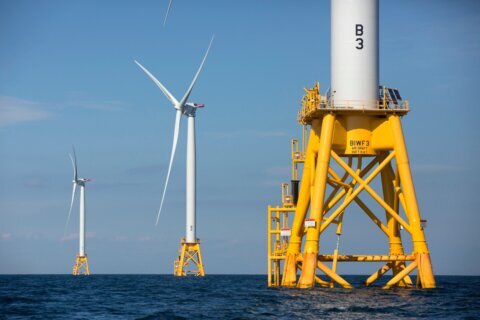From the end of 2021 through the first part of 2022, the D.C. real estate market was on fire, with a significant advantage going to sellers who sold their homes for much more than they were listed. But now there are signs that the market may be settling down, according to one real estate executive.
“We’re just getting a sense that it’s slightly cooler right now, we’re still seeing situations where the best properties are getting multiple offers, probably not as many as we had four months ago,” said Corey Burr, senior vice president at TTR Sotheby’s International Realty.
Burr said the war in Ukraine, along with higher interest rates, are playing a role in the change being seen, and it leaves buyers and sellers adjusting to a “new market reality.”
During the peak of things, Burr said it was not uncommon for sellers to have a lot of offers to choose from. However, that isn’t necessarily the case anymore.
“We might have typically seen four to 10 offers on some properties. And now we’re seeing maybe just one to three, but the offers are still very strong,” Burr said.
Another sign of things slowing a bit is more price reductions off list prices and more properties staying on the market past the first week and not selling until the second or third week.
Also, those winning offers before in many cases came with no strings attached for sellers, as buyers were forced to fight for a home by bringing lots of cash to the table, agreeing to not have the home inspected and not asking the seller to make any repairs. Now, more buyers are able to add some of the contingencies back into their offers.
“It’s gonna feel better not having to chase escalation clauses like they had been over the past 18 months,” Burr said.
For sellers, Burr said that the days of getting sometimes 30% more than the asking price may be going away as the market seems less “voracious,” but he pointed out that it doesn’t mean they won’t leave the sale with more money than they asked for.
“So if they go into a listing, understanding that it might be a little bit bumpy or road to get to the final ratified contract, and they might have to accept, say, a financing contingency and an appraisal contingency and inspection contingency, then they’re still going to have a successful sale,” Burr said.
Burr said the market at its recent peak was not sustainable because of a lack of equality between the seller and buyer, feeling more like what we saw in the 2007 housing bubble. At the same time, he said he doesn’t believe the cooling is a precursor to a housing bubble 2.0.
“The market just seems stronger this time, and I think it’s more sustainable when it’s not just a straight seller’s market,” Burr said.








